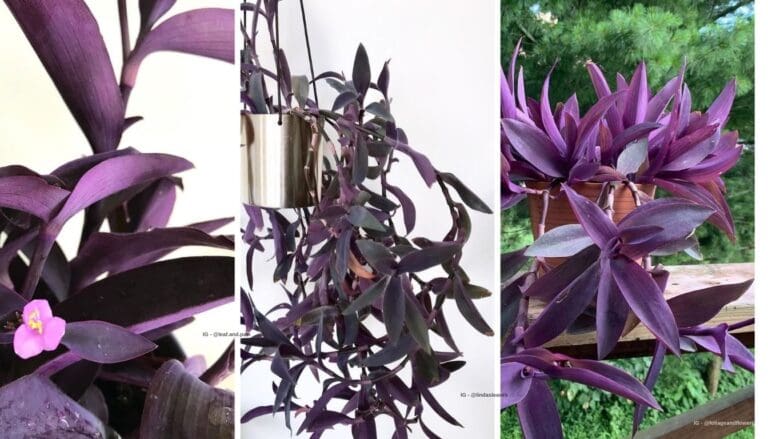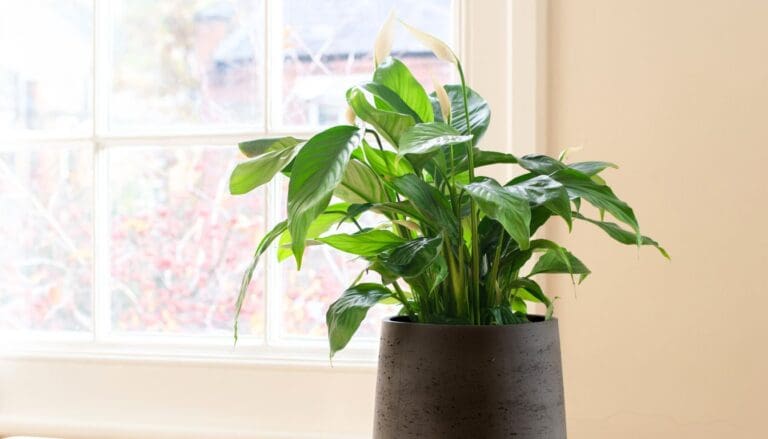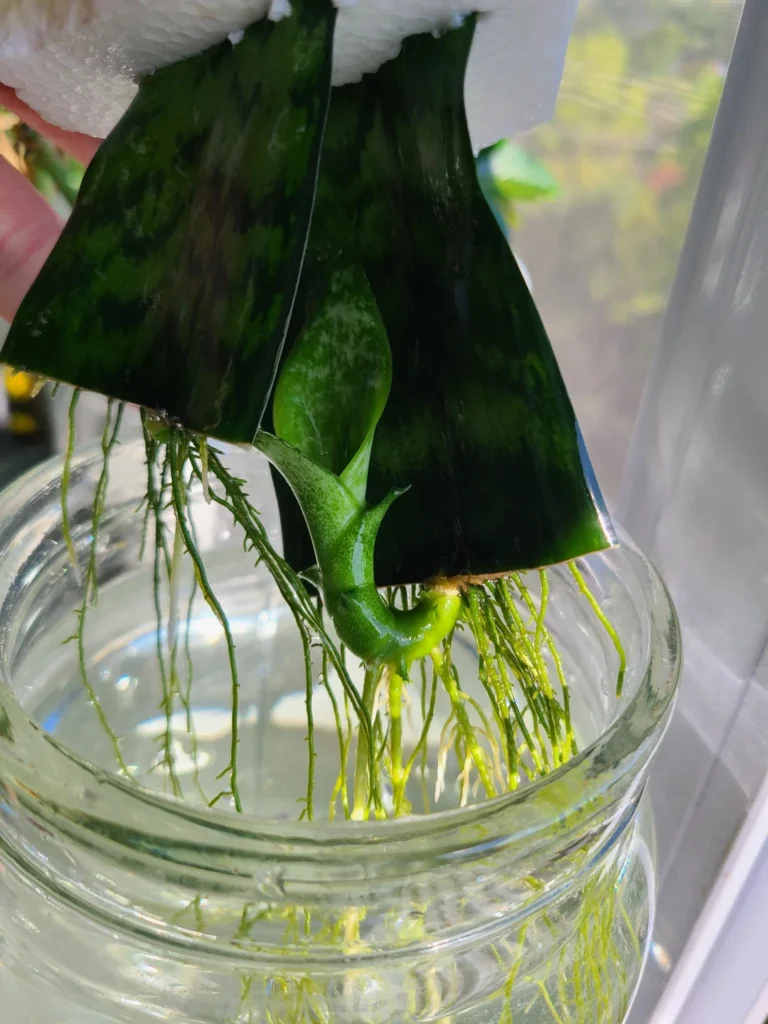Why Are My Indoor Plants Leaves Curling? (Identify Problem+Fix)
If you are an indoor gardener, you might have noticed those curly leaves on your plants. It can be disturbing to find the beautiful green leaves curling despite providing all the care and requirements.
But why are your indoor plant’s leaves curling and how can you fix the same? Let’s find out.
Indoor plant leaves start curling when they don’t have enough water, or it loses water quickly. Excessive lighting, underwatering, exposure to high temperature often leads to a lack of water in the plant, causing curly leaves. Apart from that, pest infestation can also cause curly leaves.
Leaf curls in some plants are natural. It depends on the variety of the plant you are growing. If it is their actual shape, you don’t have to worry about such leaves.
For example, African violets of some varieties have naturally curled leaves.
This article will help you identify some reasons behind the problem of curly leaves in indoor plants. We will also cover their solutions. So, keep reading.

Please note: Simplify Plants is reader-supported. Some links in the post are affiliate links and I get a commission from purchases made through links in the post.
What is leaf curl caused by?
Leaf curl usually occurs when they are affected by fungus, bacteria, or some deficiencies in your plant. In severe cases, your plant might even end up dying.
By identifying the right signs of leaf curls, you will be able to estimate and start the correct treatment to extend the life of your plant.
There are different patterns of curling – upwards, downwards, inwards, curling of the tips and edges, curling of the outer portion of leaves.
Every pattern tells you the exact cause. You just need to observe your plant closely and minutely. Understanding the real reasons will be easy for you.
The causes of leaf curl are:
- Improper light
- Watering issues
- Nutrient deficiency
- Heat stress
- Pests
- Chemical damage by herbicides
- Viral infections
Let us dive into the details of how these cause leaf curl.
Improper light

Most indoor plants prefer bright indirect light. Direct sunlight or low light can cause health issues such as the curling of leaves.
Excessive light
All the plants need sunlight for energy. For some plants, high light plays a very vital role. But anything excessive is always harmful. The same goes for light.
Too much light will make the leaves curl downwards at the edges. You will also notice other signs of excessive light like yellow leaves and sunburn. Downward curling can be a sign that there are other problems too.
Another sign is the soil is too compact. But some plants like Crotons need high light for a long time. It can depend on the plant you are growing.
Solution
If you find that your houseplant’s leaves are curling downwards, turning yellow, or have sunburn spots, move your plant to a shade.
If you have placed them near a south or west-facing window, use curtains or Venetian blinds to create direct sunlight filters.
Keep them near a north or east-facing window as they produce bright indirect sunlight, which is not intense for your houseplant.
Low light
Houseplants can indeed grow under low light. But too low light will harm the plants. They won’t get the energy to perform the daily activities, due to which the plant will become weak.
The plant will also get leggy, and the leaves will curl upwards, constantly trying to reach the sunlight.
Solution
Keep your plant near a window with some indirect sunlight. You can keep them near the south or west-facing window with curtains pulled down to create a filter.
You can keep them near the north or east-facing window where they will get the perfect bright indirect light. This direction doesn’t release intense sun rays.
You can also use grow lights for your houseplant. If you have a shelf with many houseplants or keep them on a patio, keep the grow lights near them with 12 inches distance in between. It will give them all the light they need.
Watering issues

Both overwatering and underwatering will cause curls in your houseplant leaves. However, watering depends on the type of plant you are growing.
Some need to be moist, some like slightly damp conditions, and some can remain in drought for a long time. Some plants like cacti can remain without water for even a month or more. Watering depends on the plant type you grow.
Underwatering
This happens when you are negligent towards watering your houseplant.
When you do not water your plant, the plants get dehydrated, the leaves become yellow, then turn brown at the tips and edges. The leaves start curling at the tips when they become dry and crispy.
When you water your plant less, the main portions start absorbing the water. It fails to reach the cells of the leaves at the tips and edges. As a result, the leaves become dry, crispy, curly, and brown at the tips.
Another reason for this problem is the quality of the soil.
Probably, the soil you are using doesn’t retain enough moisture. Most of the time, high sand content drains water very quickly, due to which the plant doesn’t get water evenly in all parts, causing curly leaves with brown tips.
Solution
Water your plant thoroughly once a week. This should keep the soil moist for the whole week. Some plants prefer slightly damp conditions. For those plants, you can increase to watering twice a week.
But the thumb rule is to check the soil first. When you keep your plant thirsty, the soil becomes compact. Do not allow the soil to reach such a stage. Water immediately whenever you see any signs of underwatering. Keep the soil’s moisture under check.
Another thing you should consider is avoiding sand in the medium.
Sand drains water very quickly, not giving the plants enough time to absorb water and nutrients. It is better to avoid sandy soil. By any chance, if your soil has more sand, add compost to it. It will help to retain moisture.
Overwatering
Overwatering causes more harm than underwatering. It happens when you water the plant frequently without checking the moisture level.
Most houseplants do not need daily watering. Watering deeply once a week will keep them perfectly moist throughout the week.
Another reason is poor drainage. When the soil fails to drain excess water, it keeps the soil damp for a prolonged period.
And again, we start watering over that. This further causes root rot. The initial stages of overwatering are yellow and wilted leaves. The leaves will then start curling downwards.
Root rot attracts all the pests and diseases. The leaves stay wet, water-soaked due to overwatering and even start dropping when worse.
Another reason is the pot size. While keeping the plant in a bigger pot and watering, the soil takes forever to dry. They remain damp for a long time, causing root rot and infestations.
Solution
First, concentrate on your watering routine. Consider watering your plant once a week. The plant might need more water during the summer. You can water them twice a week during hot summers.
During the winters, reduce the watering frequency. Mark a calendar to follow up on the watering of your plant accordingly. This will help you determine the next time of watering.
Check the moisture by poking your finger inside the soil. If the topsoil feels dry, you can water your plant. Some plants will wilt when they need water. Watch out for the signs and water them.
Avoid soil with high clay content. It can hold water for a long time and drain it very slowly. Watering your plant in such conditions leads to overwatering. To improve drainage, add compost to your potting mix.
Use a pot based on the size of the plant. Make sure it has drainage holes. Lift the pot to weigh it. If it feels heavy, don’t water the plant.
Also read: Overwatering vs Underwatering
Nutrient deficiency

Plants need nutrients to remain strong and healthy, filled with abundant blooms. Without proper nutrients, the plants will become weak and droop. They will start curling, and there won’t be any blooms.
Nitrogen
Nitrogen plays a vital role in the production of chlorophyll. Chlorophyll helps the plants to turn sunlight into food. If your plant does not have enough nitrogen, the leaves will not remain healthy and turn yellow.
In most cases, the plant will reserve all the remaining nitrogen for the new leaves. As a result, the older leaves will suffer, and due to nitrogen deficiency, they will start curling up inwards.
The leaves that have turned yellow turn brown and die. The plants which are about to bloom will show signs of lack of nitrogen in the leaves.
Phosphorous
The effects are more or less similar to nitrogen deficiency. The older leaves get more affected. They turn a bit bluish and start curling downwards.
The leaves sometimes have a shiny look and bronze spots on the older leaves. The flowers do not bloom in their blooming seasons. Even if they bloom, the flowers are smaller than their regular size.
Potassium
Potassium helps to keep the plant strong, primarily the stems and root system. They help the plant resist diseases.
If your plant has a potassium deficiency, it will become weak and prone to diseases. The leaves become yellow, and the outer portion curl downwards. The leaves also turn brown at the tips and edges.
Solution
Apply a balanced fertilizer with an NPK value of 10:10:10 or 20:20:20. It will help to maintain and give your plant all the nutrients it needs for healthy growth.
You can choose a liquid fertilizer or slow-release fertilizer. Liquid fertilizers are easy to absorb. Slow-release fertilizers release the nutrients slowly, lasting up to 8-9 months, so you won’t have to worry about regular fertilizing.
Here are some organic ways for treating the deficiencies individually:
Nitrogen (N) – Fish emulsion, cottonseed meal, and alfalfa meal.
Phosphorous (P) – Rock phosphate and bone meal. Try using this treatment when the temperature ranges between 65 to 75°F.
Potassium (K) – Kelp meal and granite meal.
Before applying, check the pH level of the fertilizer. The ideal pH of fertilizer should be 6.0 to 7.0 for plants growing in the soil. For water plants, pH should be 5.5 to 6.5.
You can also use eggshells, banana peels, green tea, and aquarium water.
The plants just need these macronutrients and micronutrients like calcium, magnesium, iron, boron, sulfur, etc. These organic fertilizers will do the job. The chemical fertilizers already have these in small amounts.
Heat stress
Most houseplants originate from tropical areas and need warm weather to survive. But too much heat will damage them.
Excessive heat increases the evaporation and transpiration rate. Besides, it reduces the humidity level. Most indoor plants need high humidity for survival.
Too much heat can result in leaves curling upwards. Regular watering also won’t be much adequate.
Solution
If your plant is exposed to a heater or radiator, remove the plant from that location.
Instead of increasing the watering, change the position of the plant to a place with no heat. Keep it away from the windows with excess sunlight. Keeping them near the north or east-facing window will be good as they don’t have much intense sun.
Keep your plant near a window or a cool room where the plant can receive some fresh breeze for some time.
But do not keep them too close to the fan or air conditioners. Your plants will need light, cool breeze to cool down the heat stress, not cold drafts.
Pests

Aphids, spider mites, thrips, mealybugs, whiteflies, scales – all are uninvited guests to your plant. Primarily they get attracted due to prolonged damp conditions in your plants.
Aphids are common insects found in all houseplants. You will find them under or on the tips of the leaves. Whiteflies are also common and are found under the leaves. They are tiny white bugs that are hardly visible.
Spider mites release some fine web lines on the border of the leaves.
These are all sap-sucking bugs that suck out all the nutrients from the plants.
All these lead to leaves curling upwards when infested. Sometimes, the edges and tips also curl downwards.
Whenever you see curls on your plant leaves, along with some distortions, try checking the plant closely. You might find these uninvited guests sitting in huge colonies under the leaves.
Solution
First, you need to isolate the plant and give them a good shower. Maintain good pressure so that all the pests get washed away. Handpick the rest if visible.
Most of the time, insecticides and pesticides are used to get rid of them. But first, try using some organic methods. If you fail, you can opt for the chemical ones.
Spray neem oil on your plant. It is an effective way of removing all the pests. It will also cure your plant of the damage done by the notorious bugs. Spray neem oil for 14 days at least to see results.
You can use mildly concentrated dish wash soap or baby shampoos. Mix 1 tsp dish wash or shampoo with 4 ounces of water and spray it on the areas with bugs.
Let it remain for some hours and after that, rinse off. This soapy water will help get rid of the pests and the bacteria and fungus released by them.
Some of these bugs have a waxy exoskeleton as protection. Spraying with potassium salt will help in weakening this protective shell and killing them. Do this weekly until you find no more bugs on your plant.
Chemical damage
If you want to use herbicides, it is crucial to ensure that you only use them to get rid of the weeds. If by mistake, the herbicide stays in your healthy plant, it will damage the plant badly. It is sometimes impossible to repair the plant.
If you have recently used herbicide and after some days, your plant is curling upwards, it is a sign that your plant got affected by it. If you are early to catch the indications, you might save your plant.
Solution
It is impossible to rectify the mistake, so it is better to remove the plant’s affected leaves.
If you find out that the effect is severe and impossible to repair, fertilize your plant with a heavy dose and water them well. This can help in fighting the harmful effects of herbicides.
Viral infections
If your leaves are curling upwards, it is a sign that your plant might be suffering from viral infections.
Just like herbicides, viral infections are too impossible to cure. It happens mainly due to the transfer of virus due to contact of an infected plant with the healthy plant.
The contact happens when you do not sanitize your garden tools or dispose of some infected plants to your compost.
Solution
Whenever you see any signs of viral infections, you should remove and isolate the plant in the first place. Remove the affected leaves.
Do not dump the affected leaves in random places. Discard them separately in dustbins.
Always wash and sanitize the garden tools before and after use.
Leaf curl is not the only sign of viral infections. So, before declaring the leaf curl as a viral infection, check the plant closely. Observe your plant daily and deal with viral infections immediately the moment you see it.
Final words
A lot of reasons can cause leaf curl in the houseplants. So, before treating your plant, diagnose the plant closely to look out for the curling patterns and the proper indications. Only then, start the treatment.
Always try to match all your plants’ requirements with their native land while growing them as houseplants, light, heat, temperature, humidity, fertilizer, or anything else.
Observe your plant regularly. If you are unsure of something, research the particular houseplant you own to give it the best care.
When the question comes about increasing the lifespan of indoor plants, there is no alternative. And also, there is no guarantee that infection, infestations, and other issues won’t reach your plant. You will have to take care of your plant without any negligence to keep them happy.
Ref: Royal Horticultural Society, The University of Georgia, The Pennsylvania State University, Missouri botanical garden, Britannica.
Recommended Garden Supplies
| Product Image | Our Recommended Gardening Supplies | Check Offers! |
|---|---|---|
Top Top
Top
Top
Top
Top
Top
Top
Top | rePotme Houseplant and Tropical Classic Potting Soil Mix | Check Offer On Amazon |
 Top
Top
Top
Top
Top
Top
Top
Top | Espoma Organic Indoor Plant Food | Check Offer On Amazon |
 Top
Top
Top
Top
Top
Top
Top
Top | GooingTop LED Grow Light 6000K Full Spectrum Clip Plant Growing Lamp | Check Offer On Amazon |
 Top
Top
Top
Top
Top
Top
Top
Top | Soil Moisture Meter | Check Offer On Amazon |
 Top
Top
Top
Top
Top
Top
Top
Top | Govee Hygrometer Thermometer, Bluetooth Enabled! | Check Offer On Amazon |
 Top
Top | LEVOIT Humidifiers for Large Room(Best For Plants) | Check Offer On Amazon |
 Top
Top
Top
Top
Top
Top
Top
Top | Upgraded DIY Automatic Drip Irrigation Kit, 15 Potted Houseplants Support | Check Offer On Amazon |
 Top
Top
Top
Top
Top
Top
Top
Top | Stainless Steel Heavy Duty Gardening Tool Set | Check Offer On Amazon |
 Top
Top
Top
Top
Top
Top
Top
Top | Bonide Insecticidal Soap | Check Offer On Amazon |
 Top
Top
Top
Top
Top
Top
Top
Top | Bonide 32 oz Spray Neem Oil for Organic Gardening | Check Offer On Amazon |
 Top
Top
Top
Top
Top
Top
Top
Top | Garden Safe Fungicide | Check Offer On Amazon |






